First episode date 1999 | ||
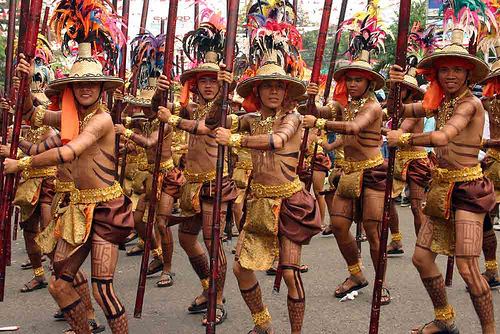 | ||
Similar Sangyaw, MassKara Festival, Ati Atihan festival | ||
Pintados was the term used by Spanish colonists to describe the tattooed indigenous Cebuano Visayan people. They were found on the islands of Cebu, Bohol, eastern part of Negros, Samar and Leyte in the Biçayas (Visayas) region of the Philippines. The word itself means "painted," and was first used during the Spanish colonization of the Philippines. The men are known for their tattoo art, which often covers most of their bodies. They apply the tattoos by pricking the skin with sharp pieces of iron and then applying black powder to the open wounds which is absorbed into the skin permanently. The inhabitants of the province of Camarines, located at the eastern end of the islands, resemble the Pintados.
Contents
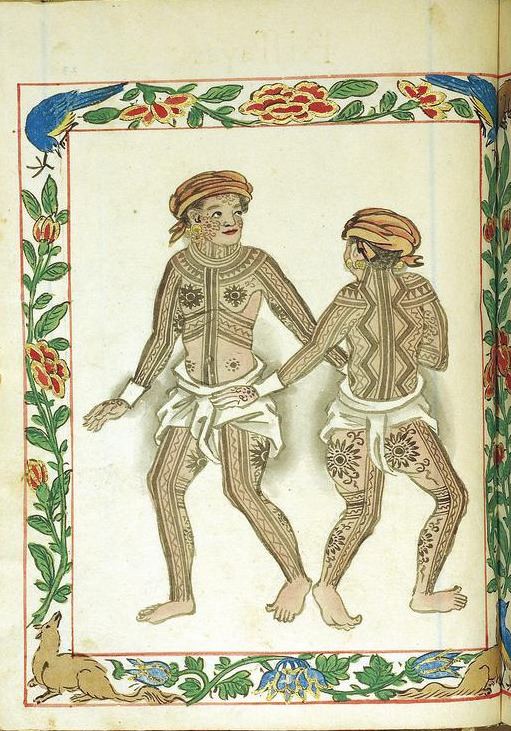
Writing in 1565, in describing the natives, Rodriguez says: "... these Indians wear gold earrings, and the chiefs wear two clasps about the feet. All the body, legs, and arms are painted; and he who is bravest is painted most."
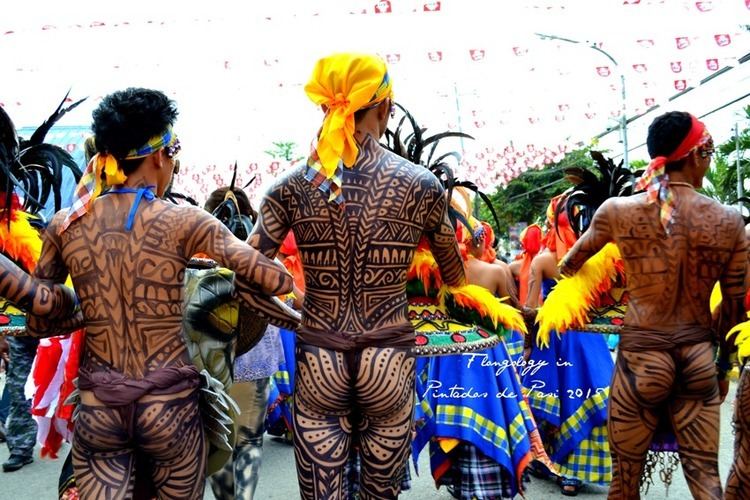
Pintado native clothing
Pintado natives wear their hair long, fastened in a knot on the crown of their head. Women often wear large earrings made of gold and ivory, and decorative scarves around their heads. The women also wear skirts that reach halfway down their leg with a loose, collarless jacket with tight sleeves. Fastened in front, these garments are made of medriñaque and colored silks. No shirts or underpants are worn, instead wearing bahaques (breech-clouts).
Sagras
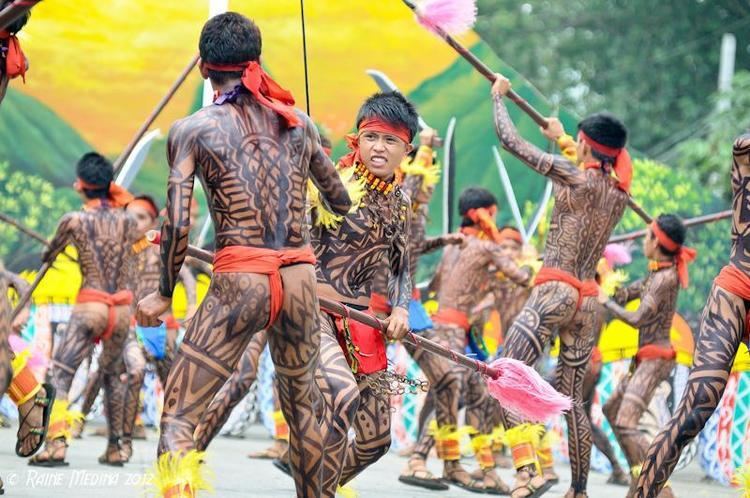
The Pintados have strict marriage customs, no one marries below his station. Men marry as many wives as they can buy and support. The women are sexually uninhibited, even encouraging their own daughters' sexuality.
Weapons
The Pintado's weapons consist of large curved knives, such as cutlasses, spears, and caraças (shields).
Mangubat
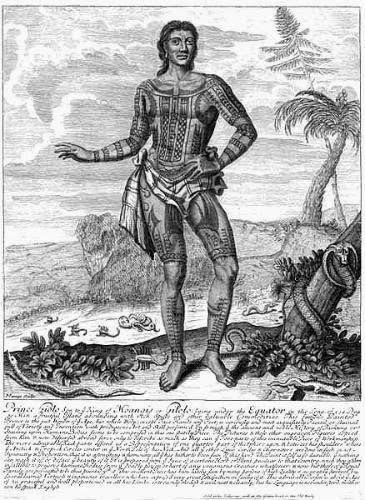
Tattoos are indicative of a man's bravery in battle: the more tattoos, the more success. The Pintados are a warlike race; continually waging war on both land and sea for Mangubat (booty). This word means going to other lands in search of conquest, to plunder, raid or to fight.
Lots are cast using the teeth of a crocodile or wild boar. The men inquire of their gods and ancestors, as to the result of their impending wars and journeys. Using knots made of cords, they foretell the outcome. The Indios (Indians) along the coast set out every year on plundering expeditions in the season of the bonanças, right after their harvests, which takes place between the brisas and the vendabals.
Any booty taken, of whatever nature, belongs to the chiefs, except for a small portion which is given to the Timaguas (Timawa) who go with them as oarsmen. While on raids, captured enemies are not killed. If a captive is killed, the perpetrator has to pay the chief for the victim, or, if unable to do so, serve as a slave to pay off the debt.
Larao
Larao, which signifies the mourning period for the deceased, is conducted with significant solemnity. A barrier is constructed around the residence of the departed individual. Should any person, regardless of their status, cross this delineated boundary, they are subject to penalties.
When a chief dies, all mourn him with the following restrictions:
In order that all men may know of a chief’s death, one of the timaguas goes through the village and announces the period of mourning. Whoever transgresses the law must pay a penalty.
